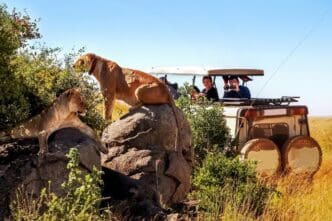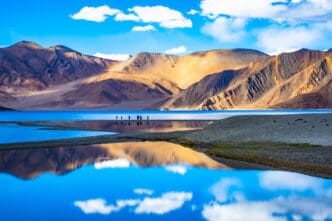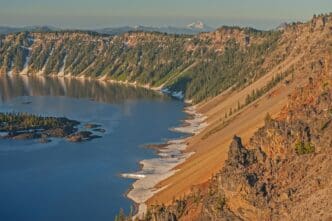For any traveler dreaming of the quintessential African safari, Tanzania stands as the ultimate destination, offering an unrivaled combination of iconic landscapes, staggering wildlife density, and the dramatic spectacle of the Great Migration. This guide serves wildlife enthusiasts, adventure seekers, and families planning a trip to this East African jewel, outlining when to go, where to explore, and why it remains the gold standard for safari experiences. The best time to visit hinges on your goals, with the dry season from June to October offering prime, concentrated game viewing, while the calving season from January to March presents a unique look at the circle of life. Your journey will almost certainly focus on the famed Northern Circuit—home to the Serengeti and Ngorongoro Crater—where expert guides lead you through vast plains in search of the “Big Five” and countless other species, creating a trip that is as profound as it is thrilling.
Why Choose Tanzania for Your Safari?
Tanzania’s reputation as a premier safari destination is built on solid ground. The country has dedicated over a quarter of its land to national parks and conservation areas, creating vast, unfenced ecosystems where wildlife roams freely as it has for millennia. This commitment results in a sheer volume and diversity of animals that is difficult to match anywhere else on the continent.
The headline attraction is, without a doubt, the Great Wildebeest Migration. This year-long circular journey of over 1.5 million wildebeest, accompanied by hundreds of thousands of zebra and gazelle, is one of nature’s greatest spectacles. Witnessing massive herds thunder across the Serengeti plains or brave crocodile-infested river crossings is a primal and unforgettable experience unique to Tanzania and its Kenyan neighbor, the Maasai Mara.
Beyond the migration, Tanzania is one of the best places on Earth to see the “Big Five”: the lion, leopard, elephant, buffalo, and the critically endangered black rhino. The country’s diverse habitats, from the grassy plains of the Serengeti to the dense woodlands of Ruaha and the unique caldera of the Ngorongoro Crater, support robust populations of these iconic animals and a stunning array of other creatures.
The experience is enriched by a vibrant cultural tapestry, most notably through interactions with the Maasai people. These semi-nomadic pastoralists, known for their distinctive red shukas and intricate beadwork, coexist with the wildlife, offering visitors a deeper understanding of the human element within this wild landscape.
Understanding Tanzania’s Safari Circuits
Tanzania’s vastness means its parks are generally grouped into regional “circuits.” For most visitors, especially first-timers, choosing the right circuit is the most important decision in the planning process.
The Northern Circuit: The Classic Choice
This is the most famous and accessible safari circuit in Tanzania, offering a seamless and incredibly rewarding wildlife experience. It hosts the country’s most celebrated parks, and its infrastructure is well-developed for tourism.
Serengeti National Park: The name itself is synonymous with safari. This massive park is the heart of the Great Migration for most of the year. Its endless plains, dotted with acacia trees and rocky outcrops known as kopjes, provide the classic backdrop for spotting lions, cheetahs, and leopards.
Ngorongoro Conservation Area: A UNESCO World Heritage Site, this area’s centerpiece is the Ngorongoro Crater. This enormous, intact volcanic caldera is a self-contained Eden, home to an astonishingly high concentration of wildlife, including a healthy population of black rhinos.
Tarangire National Park: Especially vital during the dry season, Tarangire is famous for its colossal elephant herds and iconic, ancient baobab trees. The Tarangire River becomes a lifeline, drawing animals from miles around, ensuring spectacular game viewing.
Lake Manyara National Park: Nestled at the base of the Great Rift Valley escarpment, this park is known for its diverse scenery, large troops of baboons, and resident flamingo populations. It is also one of the few places where lions have adapted to climbing trees.
The Southern Circuit: A Wilder Frontier
For travelers seeking a more remote and less crowded experience, the Southern Circuit is an excellent choice. The parks here are vast, wild, and offer a different style of safari, including boating and walking tours.
Nyerere National Park (formerly Selous Game Reserve): Africa’s largest game reserve, Nyerere offers a unique safari experience centered around the Rufiji River. Boat safaris provide close-up views of hippos, crocodiles, and drinking elephants, while guided walking safaris offer an intimate connection to the bush.
Ruaha National Park: As Tanzania’s largest national park, Ruaha is a rugged and dramatic wilderness. It is known for its large prides of lions, significant elephant populations, and rare antelope species like the sable and roan.
The Western Circuit: Off the Beaten Path
This is the domain of safari connoisseurs and those with a specific interest in primate trekking. It requires more time and budget to reach but rewards visitors with an unparalleled sense of solitude and discovery.
Katavi National Park: Truly remote and wild, Katavi offers an intense wildlife spectacle during the dry season when thousands of hippos and crocodiles cram into dwindling pools of water. It’s a raw, untamed safari experience.
Mahale Mountains and Gombe Stream National Parks: Bordering Lake Tanganyika, these parks are world-renowned for chimpanzee trekking. Following in the footsteps of Jane Goodall in Gombe or tracking habituated chimps in the lush Mahale Mountains is a profound and moving adventure.
When to Go: Timing Your Tanzanian Adventure
While Tanzania is a year-round destination, the experience changes dramatically with the seasons. Your timing should align with your priorities, whether it’s seeing the most animals possible or witnessing a specific event.
The Dry Season (June to October)
This is the peak tourist season for a reason. The weather is fantastic, with clear skies and comfortable temperatures. More importantly, the lack of rain forces animals to congregate around permanent water sources like rivers and waterholes, making them easier to find and observe. The vegetation is also thinner, improving visibility.
The Wet Seasons (November-December & March-May)
Often called the “green season,” this period sees the landscape transform into a lush, green paradise. It’s a stunning time for photography, with dramatic skies and vibrant scenery. Tourist numbers are lower, often resulting in more competitive pricing.
A major highlight of this period is the Great Migration’s calving season, from January to March. The herds gather in the southern Serengeti (Ndutu region), where tens of thousands of calves are born within a few weeks, attracting a high concentration of predators and creating a powerful display of life and death.
Planning Your Itinerary: Key Considerations
With your circuit and timing in mind, the next step is to shape your itinerary. A well-paced trip is crucial to avoid feeling rushed and to maximize your enjoyment.
How Many Days Do You Need?
A short safari of 4-5 days can provide a fantastic taste, typically covering Tarangire, Lake Manyara, and the Ngorongoro Crater. For a more comprehensive Northern Circuit experience that includes the mighty Serengeti, a minimum of 7-10 days is recommended. If you wish to combine circuits or add a beach extension in Zanzibar, plan for 12 days or more.
Choosing Your Safari Operator
Your tour operator is your most important partner in this venture. A reputable company provides not only a safe vehicle but, most critically, a highly skilled and knowledgeable guide. Look for operators registered with the Tanzania Association of Tour Operators (TATO), check recent reviews, and inquire about their guide training and vehicle maintenance standards.
Accommodation: From Tented Camps to Luxury Lodges
Tanzania offers a wide spectrum of lodging. Tented camps provide an immersive bush experience, allowing you to hear the sounds of the night while still enjoying comforts like a proper bed and an en-suite bathroom. Lodges are permanent structures, often with more amenities like swimming pools and restaurants. Staying inside a park offers the advantage of starting game drives earlier, while lodges outside the gates can be more budget-friendly.
Budgeting for Your Safari: Costs Explained
A Tanzanian safari is a significant investment, but costs can vary widely. The main expenses are park conservation fees (charged per person, per 24-hour period), accommodation, and the exclusive use of a vehicle and guide. A good rule of thumb for an all-inclusive package (excluding international flights) is to budget approximately $250-$400 per person per day for a budget safari, $400-$700 for a mid-range experience, and anything from $700 to well over $1,500 for luxury.
Health, Safety, and Practical Tips
Proper preparation ensures a smooth and safe journey. Consult a travel doctor 4-6 weeks before your trip to discuss necessary vaccinations (such as Yellow Fever) and malaria prophylaxis. Pack lightweight, layered clothing in neutral colors (avoiding black, blue, and bright colors), a wide-brimmed hat, sunscreen, and effective insect repellent.
Binoculars are an absolute must for every person on safari, as they bring distant animals into sharp focus. A camera with a good zoom lens will help you capture lasting memories. Remember that luggage is often restricted to 15kg (33 lbs) in soft-sided bags for domestic flights on small bush planes.
Most foreign nationals require a visa, which can often be obtained online via the e-visa portal before arrival. While the local currency is the Tanzanian Shilling, US dollars are widely accepted in the tourism sector for safari payments and tips.
A safari in Tanzania is more than just a vacation; it is a journey into the heart of the wild. It’s an opportunity to witness nature on a grand, untamed scale and to connect with a world that operates on ancient rhythms. With thoughtful planning, your Tanzanian adventure will not only meet your expectations but will undoubtedly leave you with a profound appreciation for our planet’s most magnificent creatures and landscapes.








